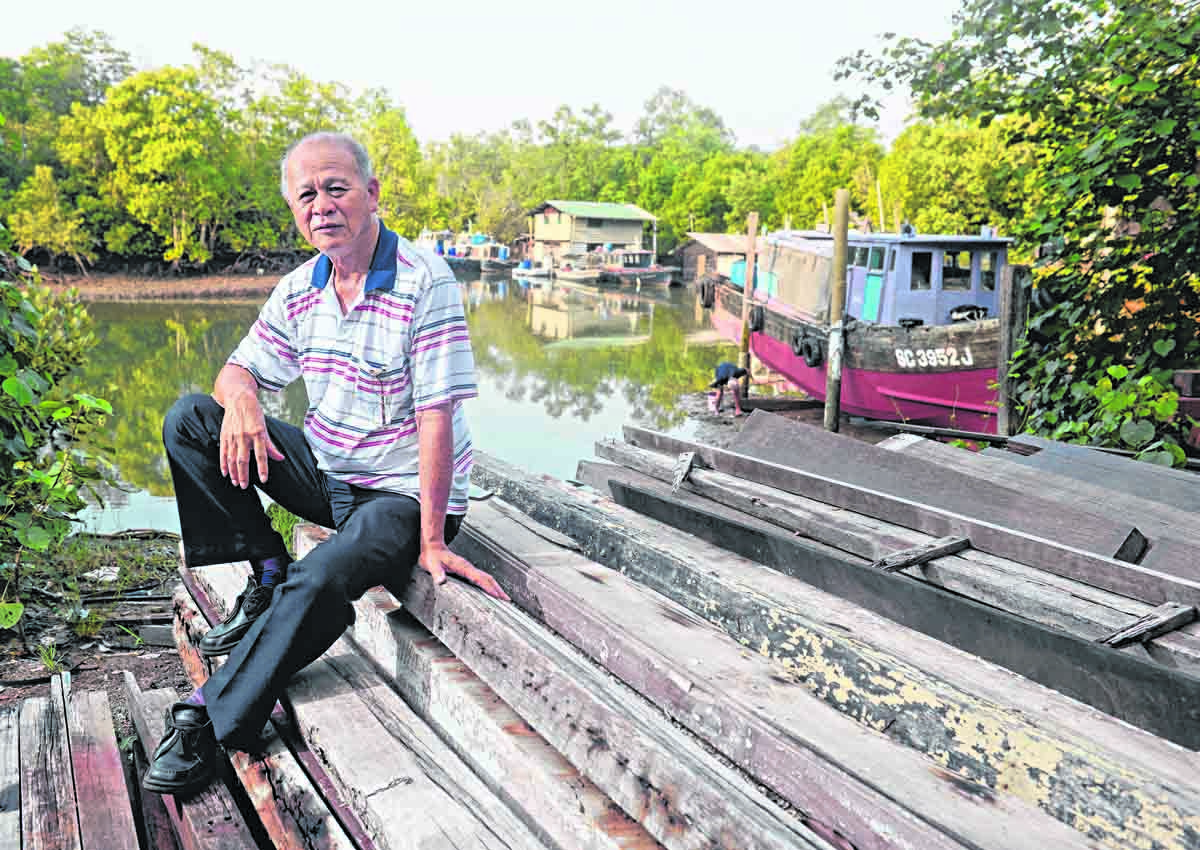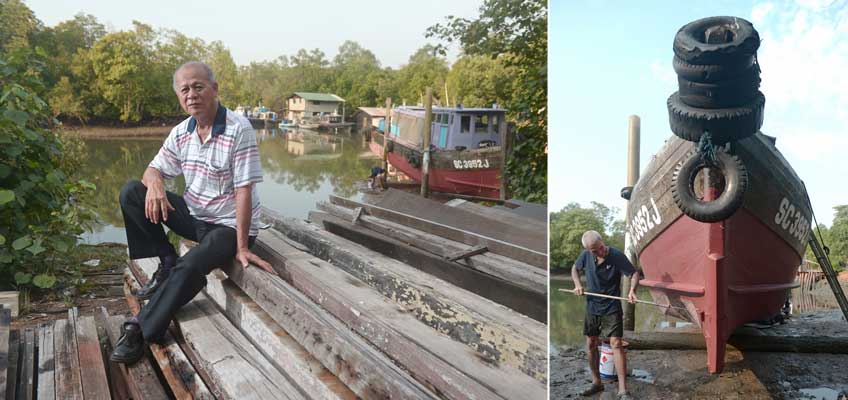Washed in Ubin’s mangroves and drying in the sun are wooden bumboats from the Changi Ferry Terminal. They are brought here at least three times a year to get barnacles scraped off their bodies and for a fresh coat of paint.
Running this quaint repair boatyard is 72-year-old Choo Seng Sim, who has been in the business for more than 20 years.
The former cruise service operator started repairing boats in Punggol in 1994.
He moved to Pulau Ubin in 1998, operating from a shack on the beach next to the island’s jetty. But it was not long before he moved inland, after stalls complained that the strong smell of paint used for repair works was affecting their businesses.
Now settled along Sungei Jelutong, located in the south of Pulau Ubin, Mr Choo’s boatyard has been issued a temporary occupation licence. A new licence is issued on a yearly basis and he will be able to operate at the site until an alternative space is provided elsewhere on the island in a few years’ time.
Minister for National Development Lawrence Wong announced in June that the National Parks Board (NParks) will take over as the central managing agency for Pulau Ubin. Previously, Pulau Ubin was managed by 12 agencies with technical and land ownership responsibilities. The handover is being conducted in phases and is expected to be completed by mid-2017.
The boatyard offers the local bumboat operators a convenient and cheaper alternative for boat repair, as “it is a hassle to travel to Tuas”, Mr Yang Soon Tong, a ferry operator in Changi explained. The 45- year-old, who took over his father’s boat 15 years ago as a ferry operator, added: “The maintenance fee for the boats is not cheap and we don’t earn much.”
Many of the ferry operators in Changi are unwilling to go to other boatyards to repair their vessels. It is a five to six-hour boat ride to the ones in Jurong. According to Mr Choo, it would also cost them double what he charges, which is approximately $500 per repair. “Unless we are forced to a point where we have no choice, we will not go to Jurong,” said Mr Yang.
The services offered at Mr Choo’sboatyard include scraping barnacles off the boats and painting and repairing holes caused by collisions. The boatyard is operated by two local workers and a caretaker. A repair job takes about a day to complete, and ferry operators have to book the services a month in advance.
Changi ferry operators worry that Mr Choo will have to stop working some day. He has no successor. Married with five children, he does not see any of them taking over his business, although his younger brother, aged 60, occasionally helps him manage the boatyard.
The ferry operators hope someone will take over when Mr Choo retires.
“If there are people willing to wash the boats, we can still survive,” said Mr Yang. Mr Choo said that he would continue working for as long as he could. “I can’t retire unless I die,” he joked.
The future of Mr Choo’s boatyard is uncertain, but ferry operators hope that such a traditional, artisanal business can be preserved for the bumboat community in Changi. “For the sake of this ferry terminal, a space on Ubin should be left for bumboat repairs,” said Mr Kit Kau Chye, 68, who has had more than 50 years of experience out at sea.
They might be cheered by this assurance from the authorities. “(NParks) will work with the relevant agencies to help Mr Choo continue his boat repair operations,” said Mr Wong Tuan Wah, NParks’ director of conservation.
tmarcus@sph.com.sg

This article was first published on September 15, 2016.
Get a copy of The Straits Times or go to straitstimes.com for more stories.
















